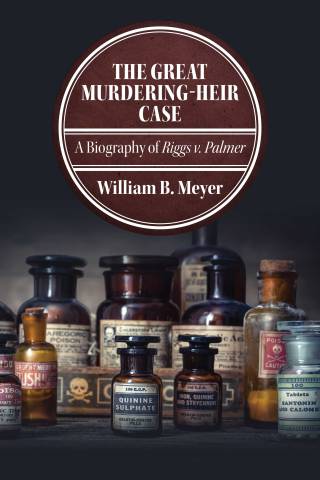Family. A sizeable inheritance. Poison. Murder. Upstate New York. These are elements of Riggs v. Palmer, a famous civil case held in 1889 that tried to determine if someone could still claim an inheritance from the man he murdered. Professor William Meyer has taken a look at the history behind the case in his recently published book The Great Murdering-Heir Case: A Biography of Riggs v. Palmer.
While taking a step away from geography and toward legal history and legal studies, Prof. Meyer’s consistent interest in New York history led him, “to find that this case, Riggs v. Palmer, a very famous one among philosophers of law, had a history no one had previously known about and that undermines a lot of what has been said about it,” he says.
From the publisher’s website:
Uncovers the facts behind the celebrated 1889 case of Riggs v. Palmer and shows how they transform our understanding of the decision.
In 1882, Elmer Palmer was convicted of poisoning his grandfather Francis in rural northern New York State. In a famous decision in 1889, the New York Court of Appeals denied Elmer the right to inherit from Francis, even though the statute governing wills seemed to entitle him to the legacy. Twentieth-century commentators have treated Riggs v. Palmer as a model of the judicial craft and a key to understanding the nature of law itself; however, the case’s history suggests that it is neither of these things. In its own time, the decision was radically at odds with legal doctrine as then understood by American judges. Rather than a quintessentially principled ruling, it was most likely ad hoc and ad hominem, concocted to thwart a particular individual thought to have been punished too lightly for his crime. The book illustrates the value of two approaches to interpreting decisions, those of ‘case biography’ and ‘legal archaeology.’ Both draw upon historical sources neglected in conventional legal scholarship. In doing so, they may challenge — or confirm — the validity as precedent today of classic cases from the past.
